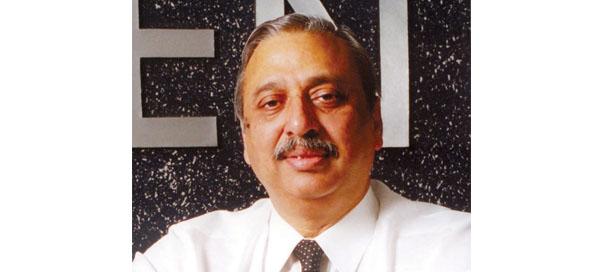By Devansh Sharma and Rashi Bisaria
Mahesh Gupta, Chairman of Kent RO Systems, recounts the brand’s journey from technological innovation to marketing excellence, and reveals that around 60% of the company’s growth comes from the North of India, with a major part of its advertising and marketing budget being spent on Print media. For every campaign, the brand tries to cover vernacular dailies and prominent newspapers
As Mahesh Gupta focused on providing pure and safe drinking water to his children in the nineties, little did he know that he was on the brink of an innovation. Gupta, an engineer from IIT and now the Chairman of Kent RO Systems, developed the technology of Reverse Osmosis which would later make Kent an innovative healthcare company with a market-share of 40% in the RO segment. But it was not just the technology - the positioning and marketing of the brand also helped it penetrate the Indian market.
From the first year when sales were as dismal as 100 units, the brand is now a Rs 450 crore company, aiming at the Rs 600 crore mark by the next fiscal. How did this growth come about? Initially, sales started picking up through word-of-mouth about the superior technology being used, but the company did not have funds to use for advertising and other promotional campaigns.
However, brand awareness and recall needed to be created. The brand’s purpose was to make people aware about its existence and educate them about the benefits of pure drinking water.

The turning point came in 2006 when it roped in actor Hema Malini as the brand ambassador. With the actor as the face of the company, Kent immediately developed a stronger recall value. It employed a 360-degree media approach. “We started a massive campaign in Print and on TV and included Hema Malini’s daughters in the advertisement too,” explains Gupta. “In the same year, we also associated with Boman Irani to promote the new product called Kent Tap Guard. Being headquartered in Delhi/NCR, our campaigns began from North India, expanding to other target markets,” he adds. The brand spends around 10% of its total budgets on advertising and marketing. Out of this, 4-5% is allocated to Print media.
 Very soon, brand Kent became synonymous with offering purity and innovation for improving the quality of life. It had positioned itself as guardian of the family’s health and a socially responsible brand, having provided healthcare products ranging from water purifiers, air purifiers, vegetable and fruit purifiers to water softeners.
Very soon, brand Kent became synonymous with offering purity and innovation for improving the quality of life. It had positioned itself as guardian of the family’s health and a socially responsible brand, having provided healthcare products ranging from water purifiers, air purifiers, vegetable and fruit purifiers to water softeners.
Print media has played a significant part in spreading the word about the “Eat pure, drink pure and breathe pure” philosophy of the brand. As Gupta says, “We count on mainline magazines, dailies in regional languages and English. Through the vernacular media, we are able to expand our reach and information flows to a large number of people. In return, people enquire about our products through our exclusive stores and helpline numbers. People connect well with regional languages. They start believing in the brand’s products when they see the ads in their very own language. Print contributes around 2-3% in every targeted region. For every campaign, we try to cover vernacular dailies and prominent papers.”
Clean and safe drinking water is every individual’s right and Kent has leveraged this need to position its products. After selling in metros, Kent is focusing on Tier II and Tier III cities where the demand for pure drinking water is on the rise. This is where Kent’s communication plays a crucial role. Their campaigns and other communication cite the reason one should opt for a water purifier. The purifiers have been positioned as a necessity and when the communication is in the vernacular medium, it strikes the right chord.
When asked about the growth of Kent’s sales in various regions, Gupta replies, “Around 60% growth comes from the North of India as that is our home ground. We are now expanding our reach into the Tier II and Tier III cities from where we expect about 40% growth.”
Kent’s marketing strategy in the months to come will see some innovations. Gupta says, “Our marketing strategy will change according to the region being targeted. For Tier II and Tier III cities, we will be adopting some innovations. We will launch a few campaigns which we cannot disclose now. We will use an optimum mix of Print, electronic and social media to reach the target audiences.”
The water purification industry is growing at the rate of 22% annually. Kent is the second largest water purifier brand in the country, claiming leadership in the RO segment. It boasts of more than 40% market-share in this segment and has emerged as a serious contender for the top spot. With the popularity of UV-based purifiers on the decline, Kent is confident about its leadership position.
THE EDGE
























